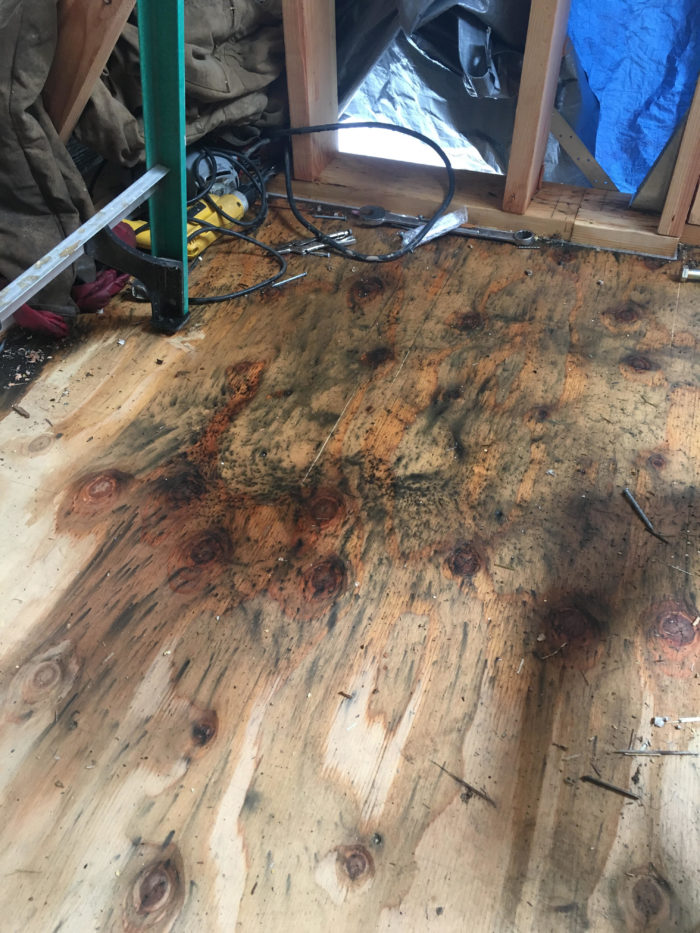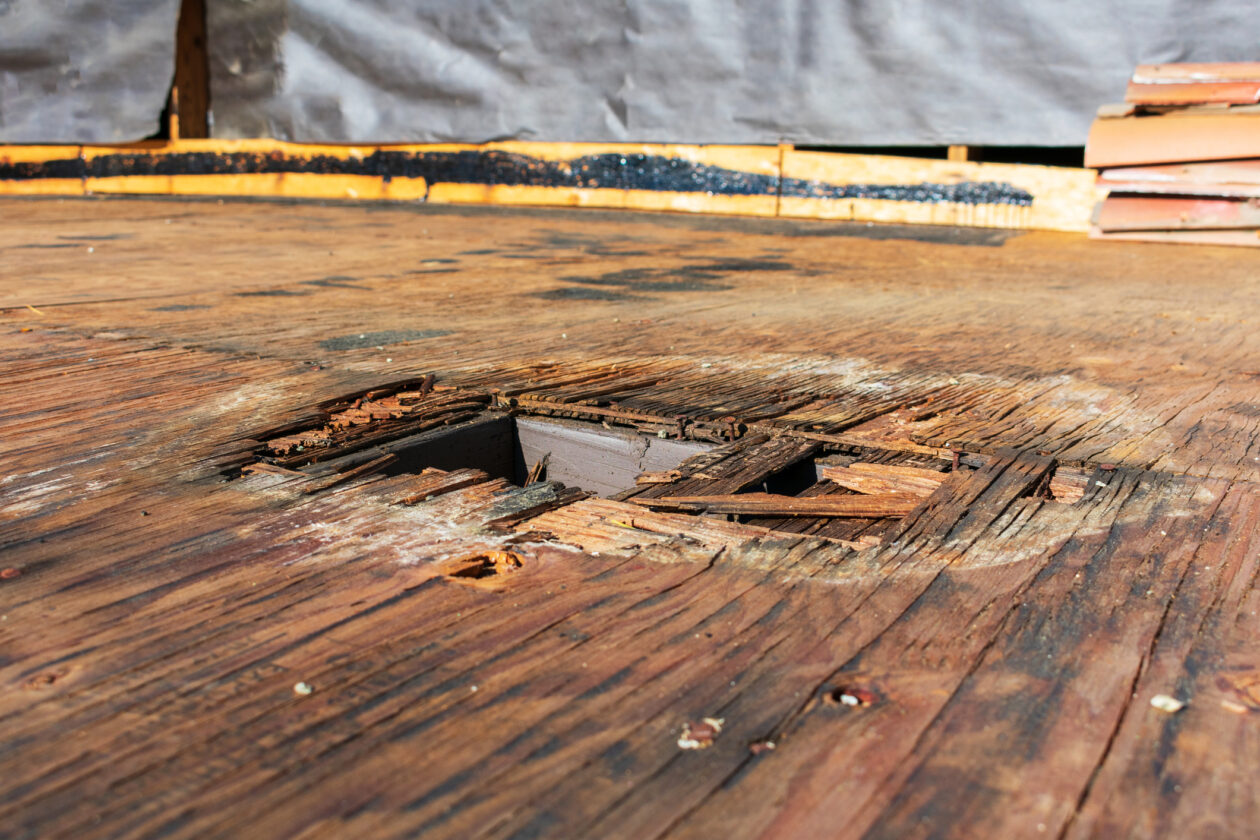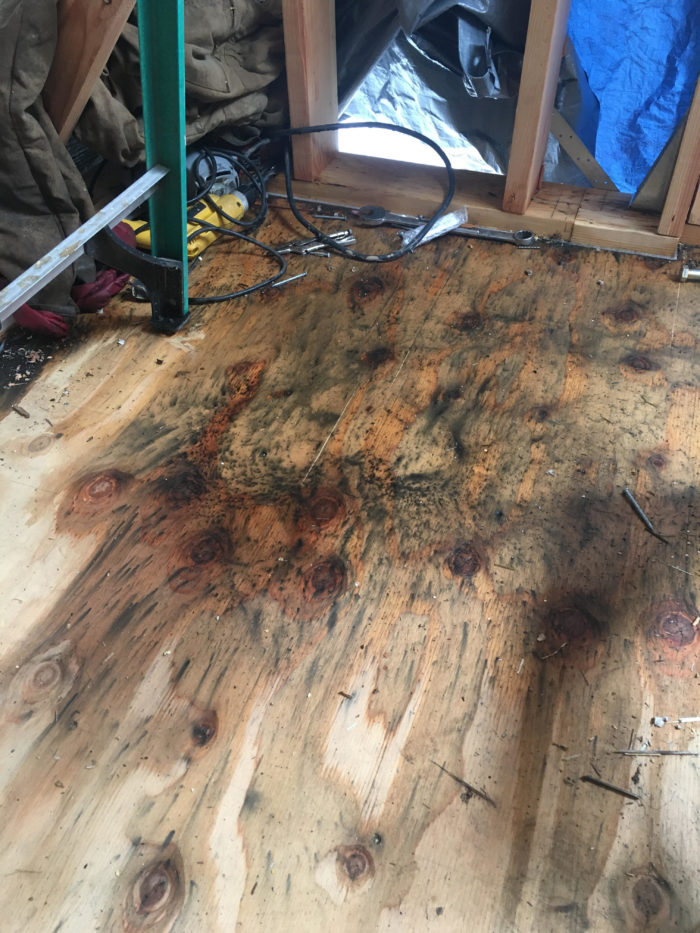Hey there! Wondering if a plywood subfloor can get wet? Well, let’s dive right in and find out! 🌊💡
Picture this: you’re redesigning your space and planning to install new flooring. But wait, what about the plywood subfloor underneath? Can it handle moisture? 🤔💦
In this article, we’ll explore the question, “Can plywood subfloor get wet?” We’ll uncover the potential issues that arise when moisture meets plywood, and what you can do to protect your subfloor from water damage. So, grab your waterproof gear and let’s get started! 💦🛠️
Wondering if plywood subfloor can withstand moisture? Let’s dive in! Plywood subfloors can handle some moisture, but excessive water exposure can cause swelling, warping, or even rot. To prevent this, ensure the subfloor is properly sealed before installing any flooring. Use a waterproofing membrane or sealer to protect the plywood. Additionally, promptly clean up any spills or leaks to avoid water damage. Regularly inspect the area for moisture and address any issues promptly to maintain a dry and stable subfloor.

Can Plywood Subfloor Get Wet?
When it comes to flooring, plywood subfloors are a popular choice due to their stability and durability. However, a common concern among homeowners is whether plywood subfloors can get wet. In this article, we will explore the possibilities of plywood subfloors getting wet, the potential implications, and how to prevent and address any water damage. Read on to find out everything you need to know about protecting your plywood subfloor.
Understanding Moisture and Plywood Subfloors
It is important to understand that while plywood subfloors are relatively resistant to moisture, they are not entirely waterproof. When exposed to excessive moisture, such as leaks or flooding, plywood can absorb water, resulting in swelling, warping, and structural damage. This can compromise the integrity of your flooring and lead to costly repairs or even the need to replace the entire subfloor.
However, it’s crucial to differentiate between occasional spills or minor moisture exposure and significant water intrusion. Plywood subfloors can withstand minimal contact with moisture, such as mopping or regular cleaning, as long as the water is promptly removed and the subfloor is allowed to dry thoroughly. Prevention and quick action are key to maintaining the health of your subfloor.
Read more: How to Protect Plywood Subfloors from Water Damage
Effects of Water Damage on Plywood Subfloors
When a plywood subfloor is exposed to excessive moisture, the consequences can be significant. Here are three main effects of water damage:
- Swelling and Warping: Absorbed moisture causes the plywood to expand, leading to unevenness and warping of the subfloor. This can result in an unstable foundation for your flooring, leading to issues such as squeaks, uneven surfaces, and potentially damaging the flooring materials themselves.
- Mold and Mildew Growth: Moisture trapped within the plywood subfloor creates ideal conditions for mold and mildew to thrive. These fungal growths not only degrade the plywood but also pose health risks to occupants, especially those with respiratory conditions.
- Structural Compromise: Over time, water damage can weaken the structural integrity of the plywood subfloor, compromising its ability to support the weight of furniture, appliances, and foot traffic. This can lead to sagging floors and potentially hazardous situations.
It’s important to address any signs of water damage promptly to prevent further deterioration and potential health hazards.
Preventing Water Damage to Plywood Subfloors
To protect your plywood subfloor from water damage, consider implementing the following preventive measures:
- Proper Installation: Ensure that the plywood subfloor is installed correctly, with appropriate moisture barriers and sealants to prevent water intrusion from below.
- Good Ventilation: Proper ventilation in your home can help prevent excessive moisture buildup, reducing the risk of damage to the subfloor. Use exhaust fans in kitchens and bathrooms, and ensure adequate airflow throughout the space.
- Immediate Action: In the event of spills or minor water exposure, promptly clean and dry the affected area to prevent absorption into the subfloor. Use absorbent materials and fans to expedite the drying process.
By taking these preventive steps, you can significantly minimize the chances of water damage to your plywood subfloor.
Addressing Water Damage to Plywood Subfloors
If your plywood subfloor has already suffered water damage, it is important to address the issue promptly to prevent further deterioration. Here are essential steps to take:
- Assess the Extent of the Damage: Determine the severity of the water damage, identifying affected areas and any signs of mold or structural compromise.
- Remove Excess Moisture: Use towels, mops, or wet vacuums to remove any standing water from the subfloor.
- Dry Thoroughly: Utilize fans and dehumidifiers to speed up the drying process. Consider contacting professionals who specialize in water damage restoration for more severe cases.
- Repair or Replace: Depending on the extent of the damage, you may need to repair or replace sections of the plywood subfloor. Consult with flooring experts or contractors for proper guidance and assistance.
Quickly addressing water damage can save you from further expenses and ensure the longevity of your plywood subfloor.
Can Plywood Subfloor Get Wet? – Maintaining a Healthy Subfloor
Now that you understand the potential risks of a wet plywood subfloor and the necessary preventive and corrective actions, it’s crucial to maintain a healthy subfloor to avoid future water damage. Here are three additional tips to help you:
Regular Inspections and Maintenance
Perform routine inspections of your plywood subfloor to identify any signs of water damage, such as discoloration, soft spots, or unusual odors. Additionally, maintain a regular cleaning routine to prevent the buildup of dirt and moisture that can potentially damage the subfloor over time.
Consider establishing a schedule for professional inspections and maintenance to ensure optimal conditions for your subfloor and flooring materials.
Choose Water-Resistant Flooring Materials
When selecting flooring materials, opt for options that are inherently more resistant to moisture, such as vinyl, tile, or certain laminates. These materials can better withstand occasional spills or moisture exposure, reducing the risk of long-term damage to your plywood subfloor.
Ensure proper installation of these materials with appropriate sealants and moisture barriers to maximize their water resistance capabilities.
Be Mindful of Plumbing and Appliance Maintenance
Regularly inspect your plumbing system for any leaks or potential issues. Even minor plumbing leaks can lead to significant water damage if left unattended. Additionally, pay attention to household appliances that involve water, such as washing machines, dishwashers, and refrigerators with ice makers.
By maintaining your plumbing systems and appliances, you can significantly reduce the chances of water damage to your plywood subfloor.
In summary, while plywood subfloors can withstand some level of moisture exposure, excessive water intrusion can lead to swelling, warping, mold growth, and structural compromise. By implementing preventive measures, promptly addressing water damage, and maintaining a healthy subfloor, you can ensure the longevity and durability of both your subfloor and flooring materials. Regular inspections, proper maintenance, and the selection of water-resistant flooring options can all contribute to a healthier and more resilient plywood subfloor.
Key Takeaways: Can Plywood Subfloor Get Wet?
- Yes, plywood subfloors can get wet, but it’s important to address the issue promptly.
- Prolonged exposure to moisture can cause damage to the plywood, leading to warping or rotting.
- Waterproofing measures, such as sealing the subfloor or installing a moisture barrier, can help protect it from moisture.
- Preventing water leaks, using waterproofing membranes, and ensuring proper ventilation in the room can also help keep the subfloor dry.
- If your plywood subfloor does get wet, it’s crucial to dry it thoroughly before proceeding with any flooring installation.
Frequently Asked Questions
When it comes to plywood subfloors, moisture can be a concern. Here are some commonly asked questions regarding the topic:
How can I tell if my plywood subfloor is wet?
There are a few signs that can indicate a wet plywood subfloor. Look out for warped or uneven sections of the floor, as well as any visible cracks or gaps between the plywood sheets. An unusual musty odor or discoloration in the flooring materials is also a possible indicator of moisture. If you suspect your plywood subfloor might be wet, it’s best to consult a professional to assess the situation and determine the appropriate course of action.
What are the consequences of a wet plywood subfloor?
A wet plywood subfloor can lead to various problems if left unaddressed. Excessive moisture can cause the plywood to swell, resulting in buckled or uneven flooring. It can also lead to the growth of mold or mildew, which can negatively impact the air quality in your home and pose health risks. In addition, prolonged exposure to moisture can weaken the structural integrity of the plywood, potentially leading to rot or damage.
Can a wet plywood subfloor be dried?
In certain cases, a wet plywood subfloor can be dried, depending on the severity and duration of the moisture exposure. The first step is to identify and eliminate the source of the moisture to prevent further damage. Then, proper ventilation and dehumidification techniques may be employed to aid in drying out the subfloor. However, it’s important to note that drying a wet plywood subfloor is not always feasible, especially if the moisture has caused significant damage or if mold growth is present. In such cases, it’s recommended to consult a professional for proper assessment and remediation.
How can I prevent my plywood subfloor from getting wet?
There are several preventive measures you can take to protect your plywood subfloor from moisture. Firstly, ensure that your home is properly insulated and sealed to prevent water intrusion. Use moisture barriers, such as waterproof membranes or coatings, during the installation of your flooring. It’s also essential to promptly address any leaks or spills to avoid prolonged exposure to moisture. If you live in a high-humidity area or have a below-grade subfloor, consider using a dehumidifier to regulate moisture levels. Regular maintenance, such as keeping the subfloor clean and dry, is also crucial in preventing water damage.
When should I replace a wet plywood subfloor?
It is advisable to replace a wet plywood subfloor if the moisture damage is extensive or if mold growth is present. Signs of severe damage include excessive warping, delamination, or softening of the plywood. Additionally, if the subfloor has been repeatedly exposed to moisture or if the source of the moisture cannot be identified and resolved, replacement may be necessary to ensure the structural integrity of the flooring system. It’s best to consult a professional who can assess the condition of the subfloor and provide guidance on the appropriate course of action.

Is OSB ruined when wet or rained on? Let’s find out! #392
Summary
So, can plywood subfloor get wet? The answer is yes, but it’s not ideal. Wet plywood can lead to mold growth and structural damage. It’s important to keep your subfloor dry to maintain a healthy and stable foundation for your flooring.
If your plywood subfloor does get wet, it’s important to address the issue promptly. Remove standing water, dry the area thoroughly, and use fans or dehumidifiers to speed up the drying process. Remember to fix the source of the water problem to prevent future damage.
